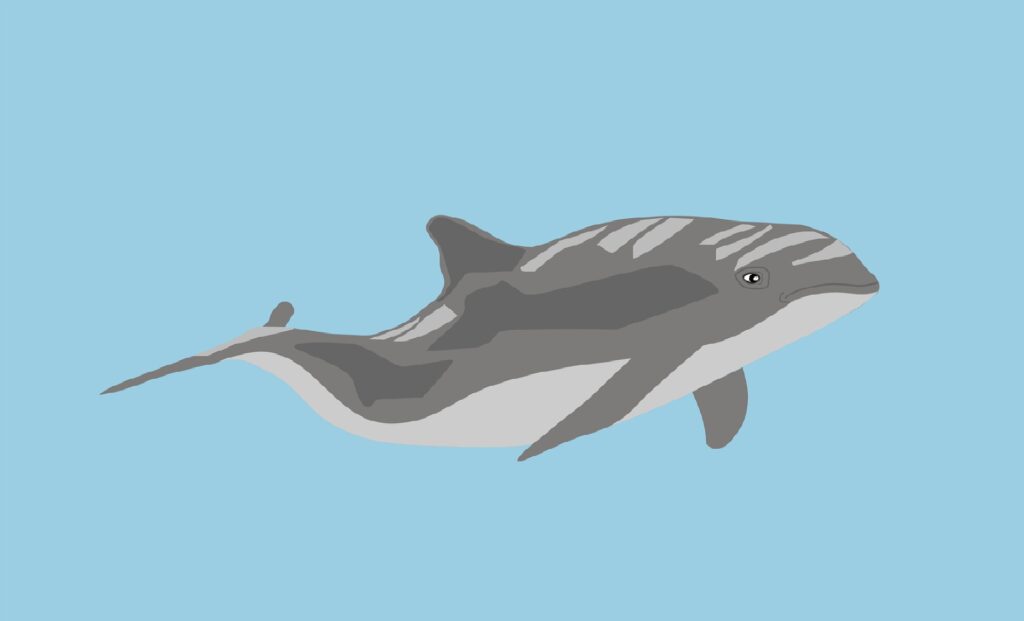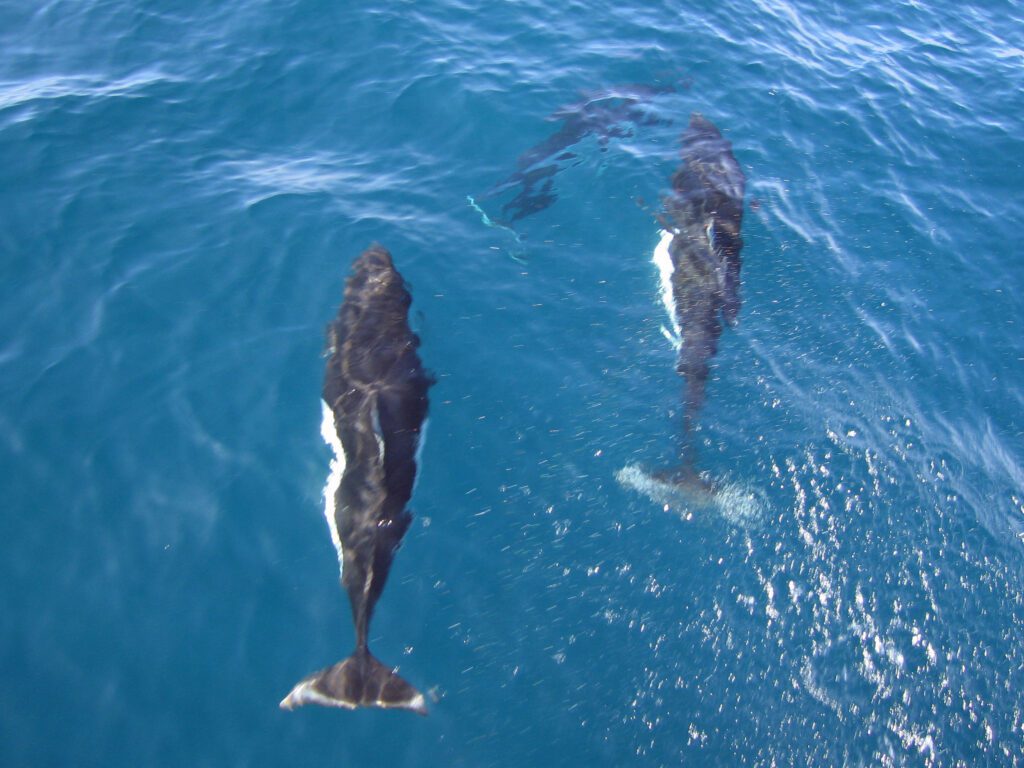Do these “smiling ambassadors of the sea” live up to their reputation of being silent creatures? Let’s investigate! Porpoises, related to dolphins, communicate using clicks and whistles. Unlike dolphins, they don’t sing intricate melodies. Porpoises produce short, high-frequency pulses to echolocate prey and navigate.
Surprisingly, they have a special structure called “phonic lips” located near their blowholes. These help them make noise without disturbance, helping them remain hidden in a noisy ocean.
To appreciate the quiet nature of porpoises, maintain a respectful distance and minimize any noise. Enjoy from afar and allow them to thrive undisturbed in their habitats.
Key Takeaways
- Porpoises are generally considered to be quiet animals, especially compared to other marine mammals like dolphins and whales.
- The quiet nature of porpoises is due to their unique vocalizations, which are typically high-pitched and short in duration.
- Porpoises use echolocation to navigate and locate prey, emitting clicks and listening for the echoes to determine the location and distance of objects.
- The ability of porpoises to remain quiet is crucial for their survival, as it allows them to avoid detection by predators and potential prey.
- Human activities, such as underwater noise pollution from shipping and construction, can have a negative impact on porpoises by disrupting their ability to communicate and locate food.
- Conservation efforts should focus on reducing underwater noise pollution and protecting the habitats of porpoises to ensure their continued survival and well-being.
Background on porpoises

Porpoises are the smallest cetaceans. They are renowned for their intelligence and social nature. These amazing creatures can be found in many oceans. They have a slender body, a triangular fin, and a smiling face. Porpoises are usually mistaken for dolphins, but they differ in various ways. For instance, porpoises have a round nose and lack the long beak of dolphins. Also, porpoises tend to be calmer and less playful than dolphins.
A fascinating thing about porpoises is that they are usually quiet animals. Unlike whales and dolphins, which are famous for their vocalizations and melodies, porpoises communicate with clicks and whistles. They make these sounds by passing air through their nostrils. The clicks help them navigate, while the whistles are used to socialize.
Recent findings suggest that porpoises even have dialects. Different groups of porpoises have their own distinct vocal patterns, just like humans who speak diverse languages or dialects depending on their location. This discovery illustrates the complexity of communication among these intelligent mammals.
An example of sound communication among porpoises can be found in a 2019 study off the coast of Canada. When one porpoise made an unfamiliar click pattern, others nearby responded with a similar pattern. This shows that porpoises not only have the ability to imitate each other’s sounds, but also a strong desire to stay connected within their social groups.
Porpoises take sound communication to a whole new level! This proves that it’s not only humans who have mastered the art of arguing and mumbling.
Importance of sound in porpoise communication

Porpoises rely heavily on sound for communication – it’s crucial for their social interactions! They use clicks, whistles, and calls to convey information, and also echolocation – which is emitting sounds and interpreting the echoes bouncing back from their environment. This helps them ‘see’ their surroundings and detect obstacles, threats, or prey.
Unlike other marine mammals, porpoises are ‘quiet’, due to their low frequency and short duration sounds. But that doesn’t mean sound isn’t important – they emit high-frequency clicks, which humans can’t hear without special equipment. Plus, each individual porpoise has its own unique click patterns and whistle sequences – like a vocal signature! This helps them identify each other and maintain relationships within their pods.
Sound provides valuable information about porpoises. Scientists use acoustic monitoring techniques to study them in the wild and captivity. For example, researchers deployed underwater microphones near captive harbor porpoises to record their vocalizations during different activities.
Overall, sound is a key part of porpoise communication. It helps them find food and interact with each other. Even though they may seem quiet compared to other marine mammals, their vocal signatures are essential for their social structure and give scientists invaluable insights.
Research on porpoise vocalization
Research has revealed porpoises’ incredible ability to communicate through vocalizations like clicks, whistles, and bursts. Plus, their sounds are unique to each individual. Even more amazing is their adaptation to different environments – their vocalizations vary based on factors such as water depth and noise levels.
Scientists have uncovered regional dialects among porpoise populations too. By comparing recordings from different places, they discovered distinct acoustic variations, suggesting that dialects may help with group identity and communication.
Continued research on porpoises is crucial for understanding their behavior and protecting their habitats in a changing marine ecosystem. It’s clear that porpoises are incredibly intelligent creatures – masters of the ancient art of underwater whispering!
The quiet nature of porpoise communication

Porpoises are famous for their quiet nature. They communicate in an unusual way, using soft vocalizations instead of loud ones. They make high-pitched clicks and low-frequency whistles, with subtle variations in pitch, volume, and duration.
This strategy helps them to stay hidden from predators and coordinate hunting strategies, find mates, and build social hierarchies.
It’s amazing how porpoises have become experts at whispering underwater, adapting so well to their environment.
To study porpoise communication, scientists use hydrophones and acoustic analysis techniques to decipher the hidden language.
We still have much to learn about porpoise communication. Exploring the complexity of their whispers offers insight into marine mammal behavior and intelligence.
Also, understanding porpoise communication can help us protect and conserve their natural habitat. So, let’s dive into the depths of their aural realm, where whispers carry profound messages. Who knows what secrets porpoises are hiding beneath their silence?
Implications of porpoise silence
The “clowns of the sea,” porpoises, can communicate without making any noise! This has several implications.
Firstly, their silence helps them to stay hidden from predators and potential prey. This makes it easier for them to hunt and stay safe.
Secondly, this silent nature helps porpoises communicate with each other. They use body language instead of vocalizations, like other cetacean species.
To study and appreciate these silent communication methods, researchers could use powerful cameras and acoustic monitoring devices to capture sounds that human ears cannot hear.
By understanding how and why porpoises stay silent, we can gain knowledge about communication strategies, which could even lead to conservation efforts for these amazing marine mammals.
Frequently Asked Questions
FAQs about Porpoises Being Quiet
1. Are porpoises generally quiet animals?
Yes, porpoises are known to be relatively quiet compared to other marine mammals. They emit a series of low-frequency clicks, whistles, and squeals to communicate and navigate.
2. Do porpoises make any loud sounds?
Porpoises do not produce loud sounds like their dolphin relatives. They primarily rely on their quiet clicks and whistles for communication and echolocation purposes.
3. Can porpoises use their vocalizations to stun or prey on fish?
No, unlike dolphins, porpoises do not use their vocalizations to stun or prey on fish. They are not known for using sound to immobilize or catch their prey.
4. How do porpoises navigate without making much noise?
Porpoises have evolved to navigate using echolocation, which involves emitting high-frequency clicks and listening for the echoes to determine the location of objects and prey. This method allows them to navigate quietly.
5. Are there any species of porpoises known for being exceptionally quiet?
Among different porpoise species, the vaquita porpoise is known for its quiet nature. As one of the smallest and most endangered cetaceans, vaquitas are often found in calm waters and tend to exhibit quieter behavior.
6. Can factors like environmental disturbances affect porpoises’ quietness?
Yes, porpoises can be affected by environmental disturbances such as loud noise from human activities, which may disrupt their normal behavior and communication. It is important to minimize such disturbances to protect their natural habitat.
Conclusion
Are Porpoises Quiet? It’s true, these creatures are masters of subtlety. They can move through the water without making a sound. But, there’s much more to it than that!
Porpoises don’t communicate with speech. Instead, they use body movements and gestures. This silent language helps them coordinate activities and stay hidden from predators.
Plus, porpoises have special vocal cords that make ultrasonic sounds. These high-frequency clicks and whistles help them move around and find food.
The real advantage of porpoise quietness is that it makes them stealthy. This helps them surprise prey or escape bigger predators. It’s essential for their survival.
The lesson here is clear – sometimes silence speaks volumes. We can learn from porpoises. We can use subtlety and understatement to communicate better.
Take a moment to be like porpoises and embrace the quiet. Listen to what’s not said. Notice the power of simplicity. You might find a deeper understanding and connection.
Don’t let noise take away meaningful conversations. Follow the example of these porpoises – let your silence speak volumes.
References




